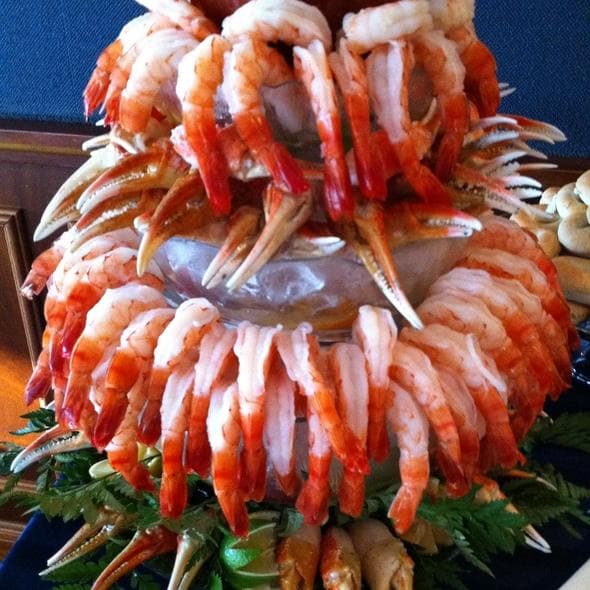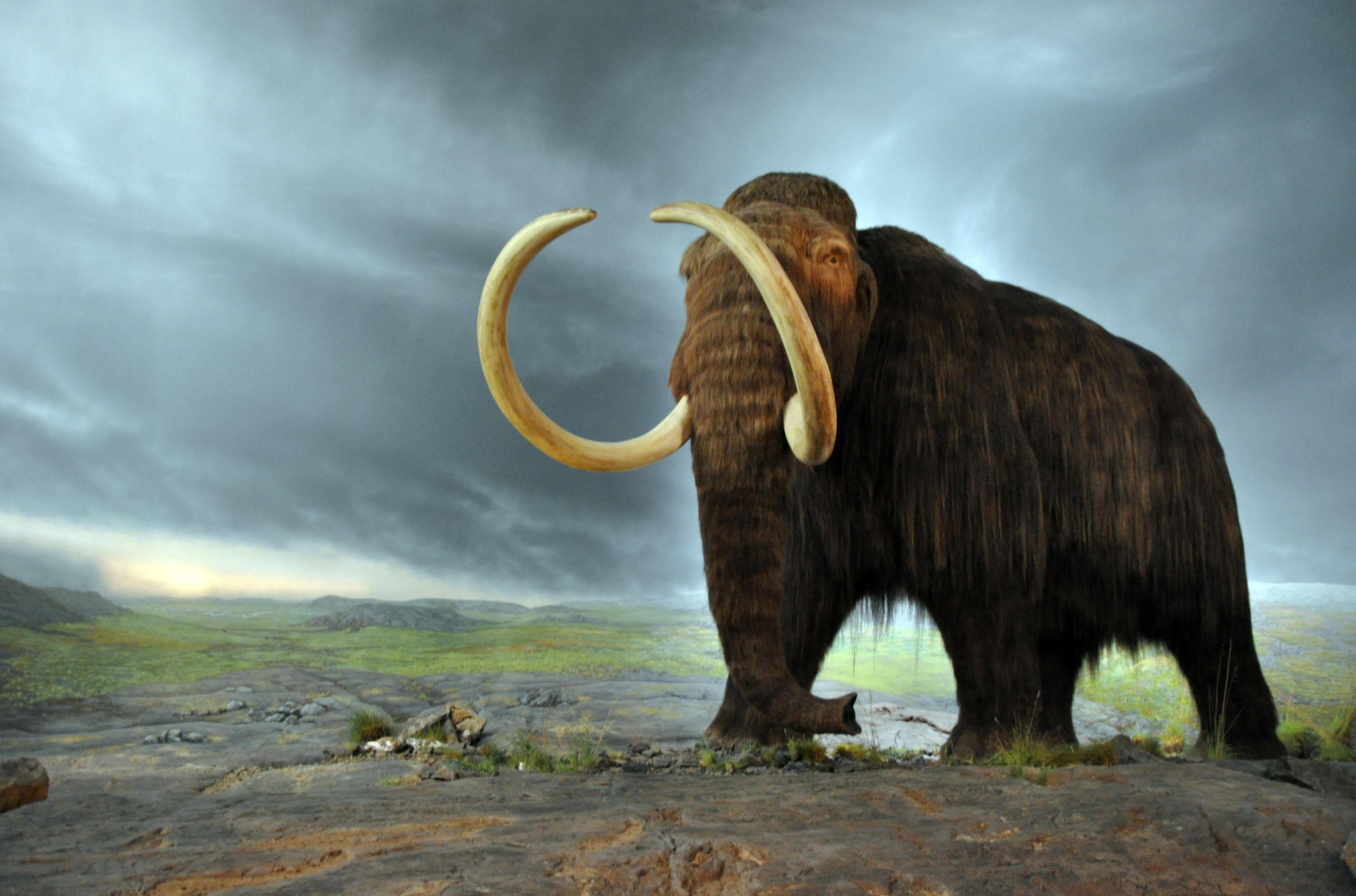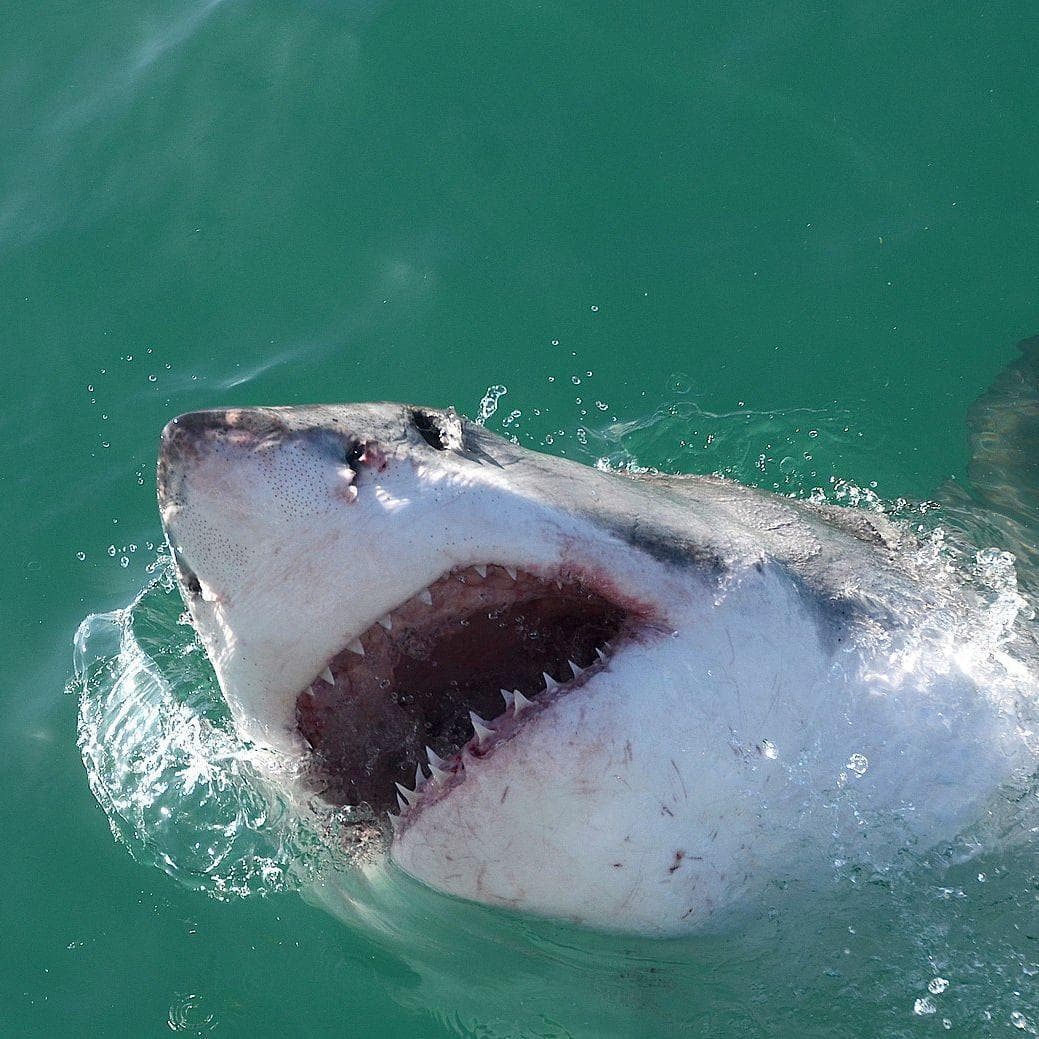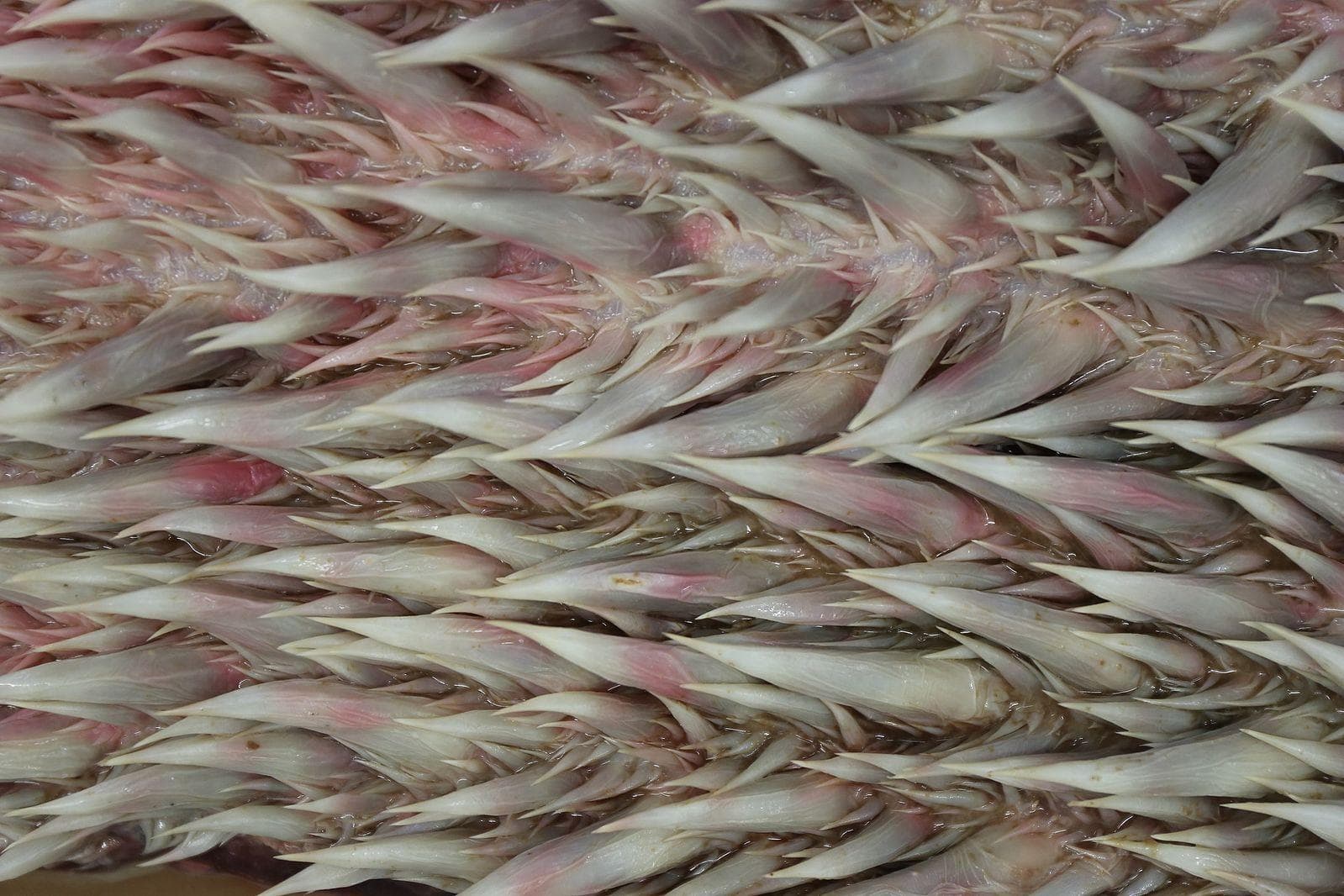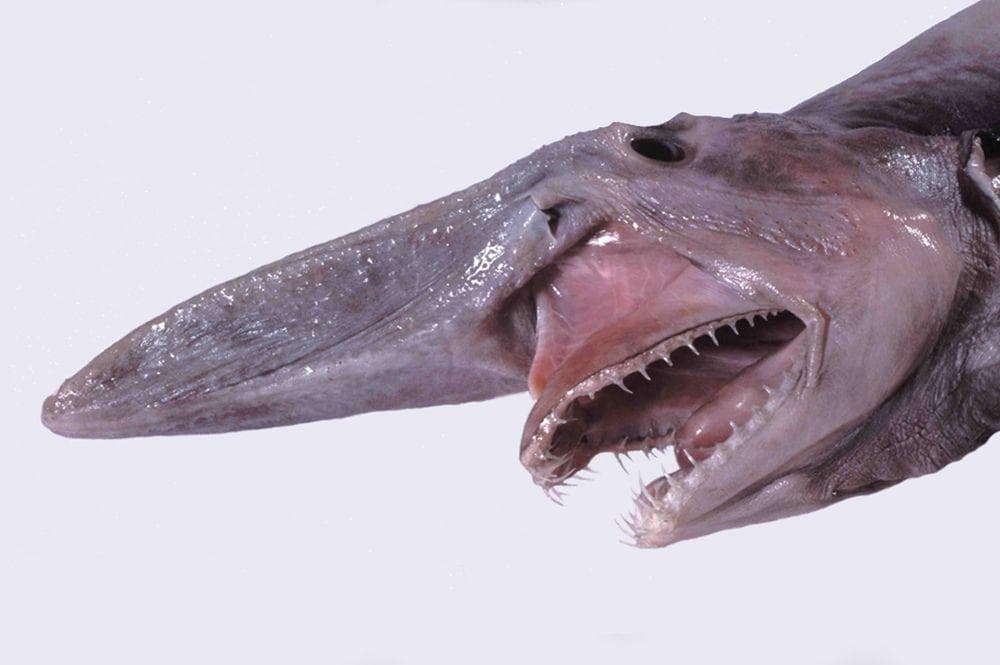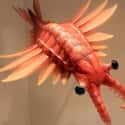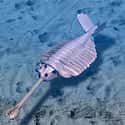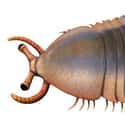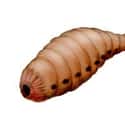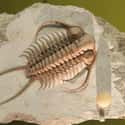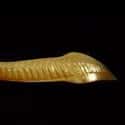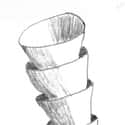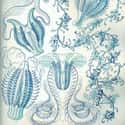-
(#1) Anomalocaris Was A Terrifying Apex Predator
The Anomalocaris was a giant for its time. Reaching lengths of over three feet, this mesmerizing maritime creature resembled a humongous shrimp. Most of its body was made of its head alone. Its bone crushing" teeth" were comprised of serrated prongs so long the creature was unable to completely close its own mouth.
With arms covered in spikes and eyes sporting 16,000 individual lenses, the Anomalocaris is believed to have been the most vicious predator in the sea. Some scientists claim that it fed on trilobites, leaving W-shaped indentations in their hard-shelled bodies that would last in the fossil record for hundreds of millions of years.
-
(#2) Hallucigenia Had Teeth Extending Down Its Throat
Hallucigenia was a Cambrian worm with an elongated spiky body, legs, and needle-sized teeth that protruded past the jaw line and went all the way down its throat. Its fossil sports a devilish grin that helped scientist to identify its head from its tail. Research suggests that this baffling creature sucked food up into its toothy, o-shaped mouth like a vacuum cleaner. Despite its unusual appearance, it shares ties with modern-day spiders and cycloneuralia worms.
-
(#3) Opabina Had Five Eyes And A Backwards Head
The now extinct Opabina was a curious creature. Sporting five gaping eyes and a backwards head, this pre-Cambrian animal is believed to have waited for its food on the ocean floor. Since its mouth was positioned beneath its head, it had to rely on its proboscis, a trunk-like snout, in order to eat. Its jointed appendages and the singular claw extending out from its head made the Opabina one bloodcurdling sight to behold.
-
(#4) Fuxianhuiid Had Several Limbs Growing Out Of Its Head
You can't discuss pre-Cambrian animals without paying tribute to the Fuxianhuiid. This ancient variation of an arthropod had quite a unique look. It had limbs that protruded from the bottom of its head, used to filter and then shovel food into its mouth in a process known as detritus sweep-feeding. And something even crazier was found extended out past its head: its nervous system. This phenomenon is called a post-cephalic nervous system, and Fuxianhuiid is the oldest known creature on the planet to possess that peculiar trait.
-
(#5) Vetulicolia Looked Like Seashells With Gills
Pre-explosion oceans housed creatures called Vetulicolia that resembled seashells, with one key difference: they had gills. Aside from these breathing holes, they really didn’t have much in the way of sensory components. These were eyeless, legless, armless creatures that could fool even the most learned scientists into believing they were merely rocks or seashells.
-
(#6) Ovatiovermis Cribratus Danced To Gather Food
Maybe you’ve heard of the tardigrade, the tiny creature that’s basically indestructible. Ovatiovermis cribratus is its oldest known ancestor. This amazing organism is essentially a worm with legs. More than 500 million years ago, it swayed and "danced" to gather food while standing firmly on the ocean’s floor.
-
(#7) Trilobites Covered The Globe
Trilobites were complex creatures living in a simple age. Their bizarre, three-part bodies make them the first known examples of hard-shelled animals on Earth. On top of their superior physiques, these creatures appeared as scavengers, predators, and prey. Their remains cover every single continent, with the exception of Antarctica.
Experts believe that trilobites were social creatures with migratory patterns that parallel those of modern animals. As the world changed and new creatures emerged, the trilobites evolved, growing keen calcite lenses in their eyes to enhance their vision and complex interlocking mechanisms on their shells that made it nearly impossible to pry them open.
-
(#8) Pikaia Gracilens Is The Oldest Known Vertebrate
What could be scarier than gazing into the mirror of time and seeing a snakelike version of man? That’s exactly what Pikaia gracilens is. This flat, spiraling sea creature was previously mistaken for a worm, but it's actually the earliest vertebrate found in history. That makes it an ancestor of humans and other vertebrates.
-
(#9) Cloudinidae Are A Mystery
The remains of the odd-looking creatures called Cloudinidae resemble a set of funnels stacked on top of on another. These pre-Cambrian organisms were plentiful across the global landscape, yet little is known about them. Despite the many mysteries surrounding them, Cloudinidae are still useful to the scientific community: they're the first shelly fossils with mineralized skeletons.
-
(#10) Wiwaxia Was A Spiky Animal That Looked Like A Plant
Modern oceans are filled with animals of all shapes, colors, and textures. That idea had to start somewhere - and maybe it did with Wiwaxia, a prime example of an unusual pre-Cambrian explosion creature. This clever organism was disguised to look like a plant and rested on the ocean’s floor. When in danger, scientists theorize that Wiwaxia could stab would-be predators with its spikes.
-
(#11) Ancient Jellyfish Were Shaped Like Christmas Tree Ornaments
The remains of prehistoric ctenophorae from the Cambrian period look like something you might hang on an evergreen tree. But don't be deceived by their festive appearance - these are very much jellyfish, they’re just less jelly-like. Their pre-Cambrian bodies were hard-shelled fortresses, which scientists suspect protected them from predators.
New Random Displays Display All By Ranking
About This Tool
In the long history of evolution on Earth, countless prehistoric creatures have appeared in large numbers, but they disappeared in the Cambrian Period. But this does not mean that no creature can survive for hundreds of millions of years or even longer. It is about 530 million years since the Cambrian Period, at that time, the crust moved little, and the climate was warm and stable, many lives were born and became the ancestors of most animal species.
Here you can find 11 horrifying prehistoric creatures that exist in Cambrian Period about 500 million years ago. Before the Cambrian, there were few species on the earth, except for some algae fossils produced in the sea. But in the Cambrian, the number of animals in the sea suddenly increased exponentially.
Our data comes from Ranker, If you want to participate in the ranking of items displayed on this page, please click here.


